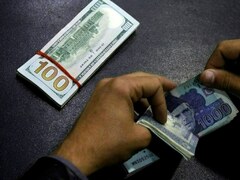Budget deficit: PIAF calls for controlling govt expenditure, high cost of debt servicing
LAHORE: The Pakistan Industrial and Traders Association Front (PIAF) has called for keeping check on government expenditure and high cost of debt servicing to contain budget deficit, as the Pakistan’s federal budget deficit projection has been revised to history’s highest to over Rs 6 trillion, highlighting the unending fiscal woes that have pushed the country into a debt trap despite putting an additional burden of Rs 730 billion on industry in the current fiscal year.
Expressing serious concern over the high jump in country’s budget deficit – the gap between federal government income and its expenditures, PIAF Chairman Faheem ur Rehman Saigol said the revision has been made in light of recent talks with the International Monetary Fund (IMF), which exposed the massive underreporting of expenditures at the time of budget presentation by the Finance ministry.
This is a highly unsustainable level and has already pushed the country into a situation where debt restructuring seems to be the only viable option.
He said that the federal government will book the highest-ever budget deficit despite putting an extra burden of Rs 735 billion on industry till the end of June on account of higher gas and electricity tariffs and additional taxes. The PIAF chairman maintained that the failure to reform the tax system and increase revenue collection is a major factor behind heavy domestic and foreign borrowings by the government.
He said that the revised estimate is Rs 1.7 trillion, or 37%, more than that approved by the National Assembly at the start of fiscal year 2022-23. The federal budget deficit in June last year had been projected at Rs 4.5 trillion.
Not only that, the budget gap is also Rs 690 billion more than what the government communicated to the IMF in December, which will be bridged by taking more loans from domestic and external sources, a task that the government is unable to perform due to the economic meltdown.
The figures also showed that the size of budget, which had been estimated at Rs 9.6 trillion in June, will rise to Rs 11.2 trillion, a new record for expenditure, which is also higher by 17%.
He said that a key reason for the record budget deficit is the unprecedented debt servicing cost of Rs 5.2 trillion, which is Rs 1.25 trillion, or 32%, more than that approved in June.
The classification by the IMF of Pakistan’s public debt as sustainable or not will be one of the key outcomes of discussions between Pakistan and the IMF on the current programme review.
In view of the low level of available FX reserves, the debt management strategy of Pakistan may have to be revisited, to ensure the stability of Pakistani rupee and restoration of international capital markets’ confidence in the economy of Pakistan.
In the last fiscal year, Pakistan had registered a record federal budget deficit of Rs 5.5 trillion, breaching the annual target by a wide margin of Rs 1.5 trillion.
The government has also revised the estimate of provincial surplus downwards to Rs 559 billion, compared to the budgetary figure of Rs 750 billion. As a result, the overall deficit has been projected at Rs 5.7 trillion, or 6.8% of GDP.
For its programme purposes, the government has set the primary deficit target at Rs 465 billion, or 0.5% of GDP, compared to the previous target of Rs 153 billion in surplus.
Pakistan has been trying hard to secure a staff-level agreement with the IMF for the past 26 days. It is now facing the challenge of avoiding sovereign default.
He advised the government to avoid hard restructuring, which is painful. Instead, it urged Pakistan to go for debt re-profiling with the official and commercial creditors under the G20 Common Framework. He stated that debt stabilisation was unlikely in the short term given the need to address the flood consequences and finance the current account deficit.
At the same time, international rating agencies have continued to downgrade Pakistan in 2022-23 in the CCC category and the sovereign USD yield curve is now inverted, reflecting market expectations of default and ensuing restructuring by Pakistan.
Copyright Business Recorder, 2023




















Comments
Comments are closed.